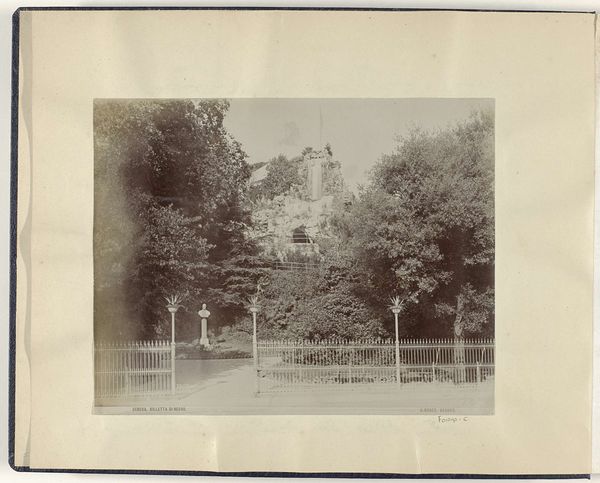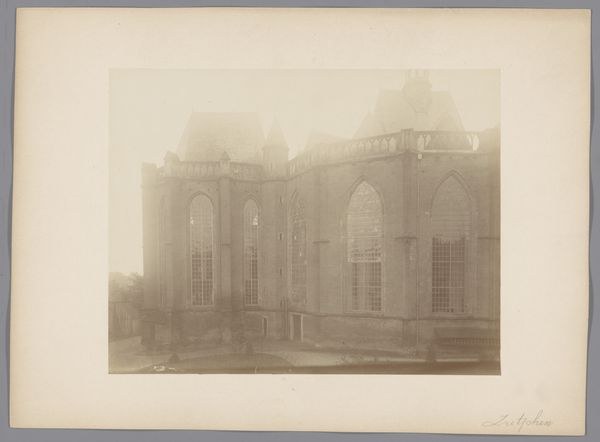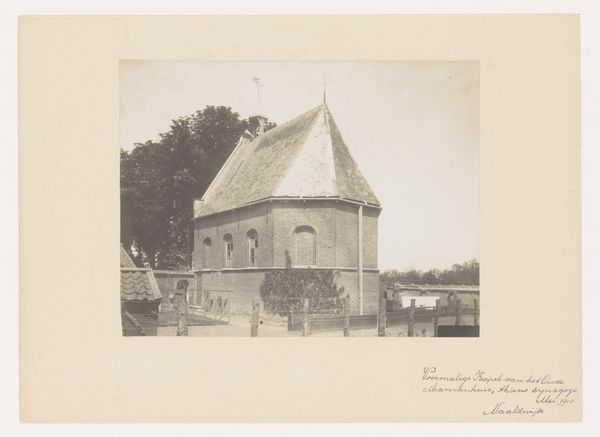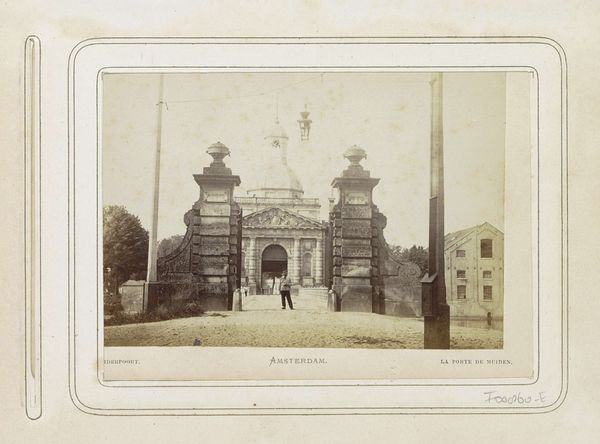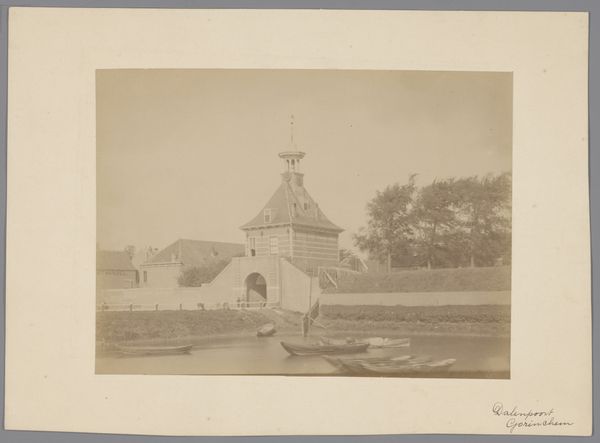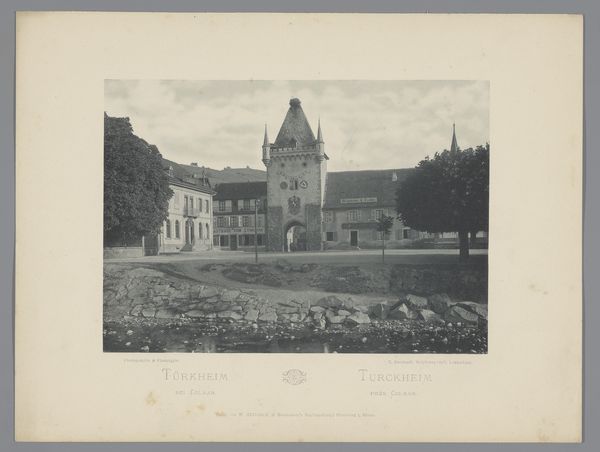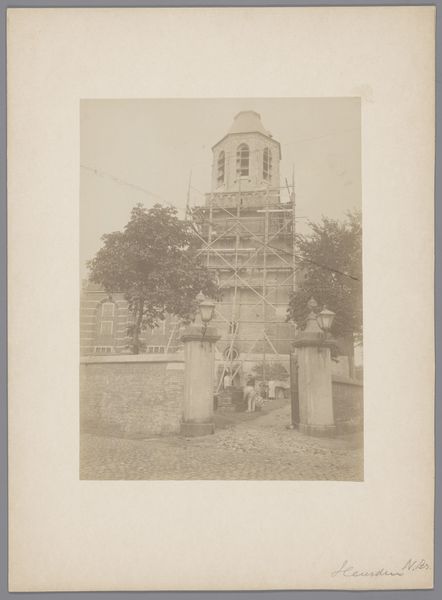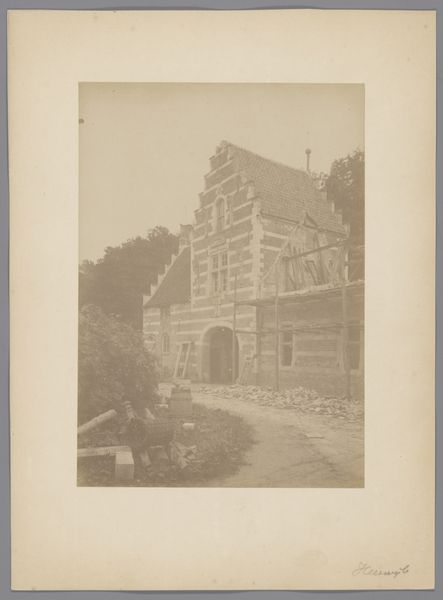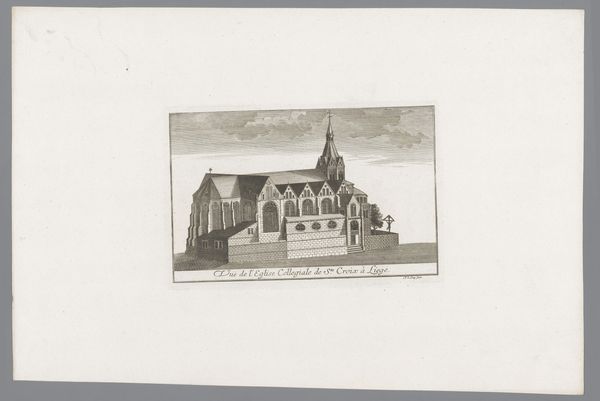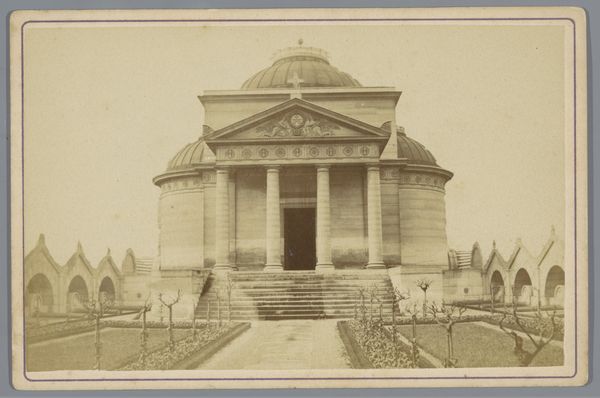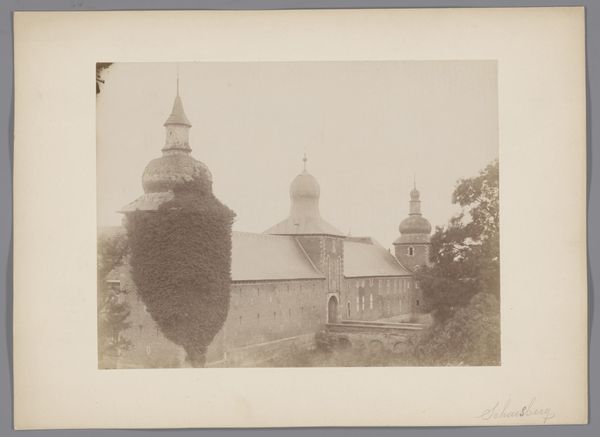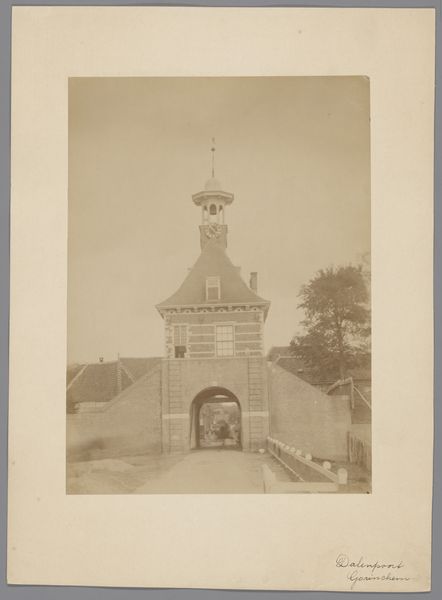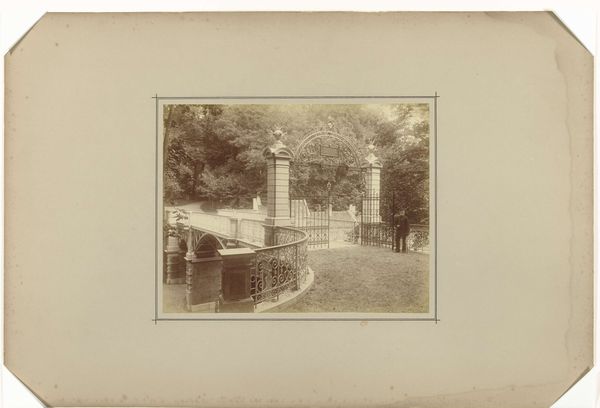
print, photography
# print
#
landscape
#
photography
#
realism
Dimensions: height 153 mm, width 216 mm
Copyright: Rijks Museum: Open Domain
Curator: This black and white photograph, taken by Charles Bernhoeft sometime before 1894, depicts the "Herdenkingsmonument van Franse soldaten te Woerth", a memorial to French soldiers. It's a fairly somber image. What's your initial take? Editor: Austere. The monument, framed by those dark, enveloping trees, feels heavy with grief and a stark reminder of loss, doesn't it? The cross at the top seems more burdened than triumphant. Curator: It absolutely conveys a feeling of sorrow. The monument itself is rich with symbolism. Observe the wreaths – eternal circles representing remembrance. The cross, naturally a potent Christian symbol. It really anchors the work's emotional impact. Editor: And who is this monument for, exactly? Where are we situated in relation to the losses of war? Curator: This monument commemorates the French soldiers who died in the Battle of Woerth during the Franco-Prussian War in 1870. Woerth is a town in Alsace, a region contested between France and Germany. You can really read into that site choice, with its layers of historical conflict. Editor: Ah, Alsace – a region that's been at the heart of so much European conflict. Makes you consider the complexities of national identity, then and now. A monument commemorating loss isn't always about pure grief; it's often entangled with patriotism, nationalism, even justification of violence. The black and white format lends a gravity too. How do we reckon with how monuments play a crucial role in shaping national memory, right? Curator: Right, and this image—a photograph *of* the monument—layers another level of representation. It fixes the monument in time and mediates our access to it. It invites reflection on how we curate history and remember loss from a remove. Editor: Exactly. I wonder how its reception has shifted through history as Alsace went back and forth between France and Germany. The monument's meaning surely was, and remains, dynamic. The ongoing trauma of war leaves legacies on populations still dealing with displacement and questions of cultural identity. It’s why we need to constantly contextualize these artworks and examine the perspectives they often overshadow. Curator: Indeed, looking at how visual and symbolic languages adapt over time gives us crucial insights. This photograph serves as both a historical record and a powerful reminder of how societies grapple with remembrance, identity, and unresolved tensions. Editor: Ultimately, it prompts us to question whose stories get told and memorialized, and how we can use art to build more inclusive narratives of the past.
Comments
No comments
Be the first to comment and join the conversation on the ultimate creative platform.
